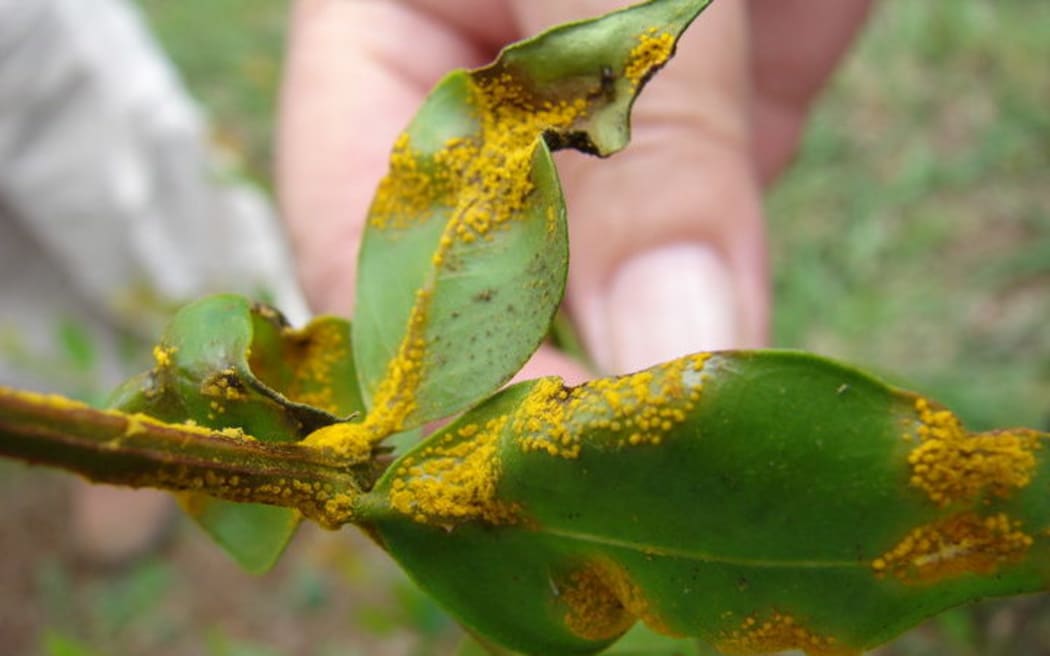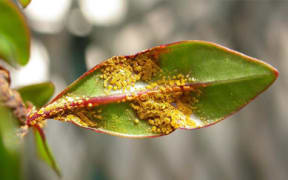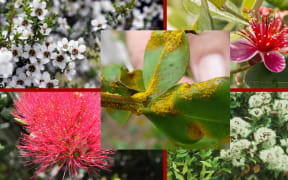An increase in funding to combat myrtle rust disease on native trees has been welcomed by a leading plant scientist, who says warmer temperatures could let it spread rapidly.

Myrtle rust. Photo: Supplied
The new government's coalition agreement makes a commitment to increased support for National Science Challenges, including stopping myrtle rust disease which can kill some species of native trees.
Landcare Reseach senior director Andrea Byrom said that was timely, because hot and humid spring and summer weather poses a risk of the disease spreading.
"It is very likely that with warmer summer temperatures, we will continue to see a growth of the fungus in a few different parts of the country, especially if we get a very windy summer," Ms Byrom said.
"With lots of potential for spores to be blown around in the wind, we are going to see this pathogen spread and that's a real worry for New Zealand."
Ms Byrom said the disease so far had hit worst on Raoul Island, while effects on the mainland had not been so bad.
She said it was important to keep track of the disease from Northland down to the Bay of Plenty, Waikato and Taranaki, as well as the Kermadec, Great Barrier and Little Barrier Islands.
She called for close monitoring of the disease's spread, including in areas where it had not yet been detected.
"This year I would be hoping that there is surveillance being done in places like Kahurangi in the top of the South Island as well, just to start to dilineate how far south the pathogen has come."
Ms Byrom said she was encouraged by attempts to eradicate the pathogen.
"We do know that it's been successful on Lord Howe Island, where they did manage to eliminate it before it got established. So despite the fact that it may be a lost cause, we shouldn't lose sight of that hope yet."





